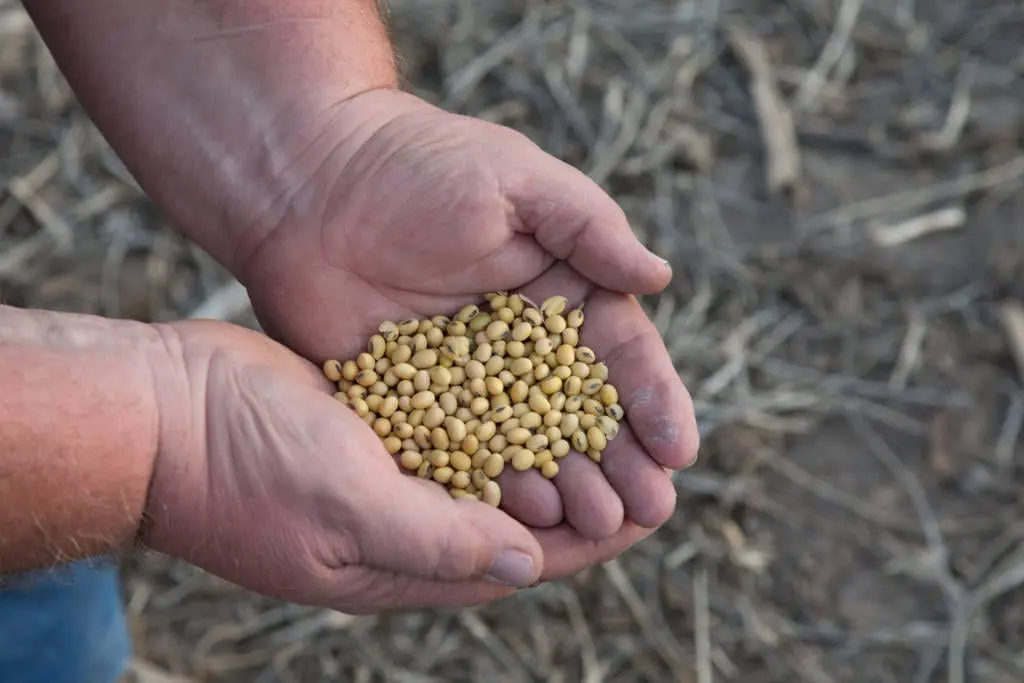As Mexican demand for U.S. soybeans continues to be strong, U.S. soy farmers and Mexican buyers connected during a virtual trade mission
Although the past year certainly has been an unusual one, demand for U.S. Soy has not slowed down, as buyers from Mexico have continued to scoop up U.S. soybeans in record numbers.
Continuing to connect all members of the soy supply chain helps to build and maintain relationships even during these strange times. On March 11 and 12, the U.S. Soybean Export Council, American Soybean Association, United Soybean Board, Iowa Soybean Association, and the Iowa Economic Development Authority hosted the Iowa Virtual Trade Mission to Mexico.
“The U.S. and Mexico have a long partnership,” said USSEC CEO Jim Sutter, as he welcomed more than 50 participants, including attendees from the country’s crushing industry. “Mexico’s crushing industry is a key partner to the U.S. soy family. Working together on quality and market access issues is mutually beneficial.”
Because customers are not yet able to do traditional farm tours, U.S. Soy brought the farms and farmers to them.
“Iowa farmers are going to be ready to produce a crop. I’ll promise you that,” said Jeff Jorgenson, an Iowa farmer and ISA president.
Grower leaders Robb Ewoldt, Randy Miller, and Jeff Frank provided spring updates from their farms, including planting intentions and a quick rundown on their operations’ sustainability methods.
“It’s critical that we continue to connect with our customers,” said Carlos Salinas, USSEC’s regional director for the Americas. “This is a market that has not only shown real growth but has demonstrated a preference for U.S. soy products. In 2020, the U.S. had an 85 percent market share in Mexico’s imports of whole soybeans, nearly 100 percent for soybean meal, and over 92% for soybean oil.”[1]
In the current marketing year (model year 2020/2021), Mexico’s share as a destination for U.S. exports has been 5 percent for whole beans, 14 percent for soybean meal, and 5 percent for soybean oil.[2]
“While U.S. soybean meal and oil exports to Mexico are down from the high-water marks of the 15/16 and 16/17 marketing years, that is more a function of Mexico expanding crush capacity and becoming a more dedicated importer of whole soybeans for domestic crush,” said Salinas.
According to Mac Marshall, vice president of market intelligence for USSEC and USB, this past decade has seen U.S. soy exports to Mexico substantially rise.
“After China, Mexico has been the number two market for the U.S. soybean complex – beans, meal, oil – year after year for the past decade in both value and volume terms,” said Marshall. “There were just two marketing years when it was second to the EU in volume and one marketing year where it was second in value. In fact, over the past decade – I’m comparing completed model year 19/20 versus model year 09/10 – both U.S. whole bean and soybean meal exports have grown by nearly 50 percent.”[3]
“For the current marketing year (model year 2020/2021, data through week ending in March 18), the U.S. has exported a combined 3.84 million metric tonnes (MMT) of whole soybeans and soybean meal (SBM) to Mexico. That is a record for this point in the marketing year and 7 percent ahead of model year 2018/2019, when we had shipped a combined 3.59 MMT[4] to Mexico through this stage of the marketing year,” said Marshall.
According to Salinas, this market continues to show a tremendous opportunity for further growth.
“As consumers in this region improve their quality of life through factors such as better salaries and gender equity, they are demanding higher protein diets with a sustainable footprint. With these types of trade missions, we hope to create further demand and preference for U.S. Soy by directly connecting producers and consumers.
“USSEC has always worked to build relationships between all parties in the soy value chain, and we’ve continued to think creatively this past year about how we can keep doing that,” said Salinas. “This virtual trade mission is unique in how it created a direct connection between buyers and sellers. This was much more than a meeting. It truly allowed farmers in Iowa to speak directly to their consumers in Mexico and allowed our buyers in Mexico to talk to our farmers firsthand and learn more about how they grow a reliable supply of sustainable U.S. soybeans. The trade mission helped all parties involved to better understand the other’s sector.”
Topics covered during the event included information on sustainability, soy quality, macroeconomics, and the perspectives from the country’s soy crushing, feed/livestock industries, and those of a purchasing group.

